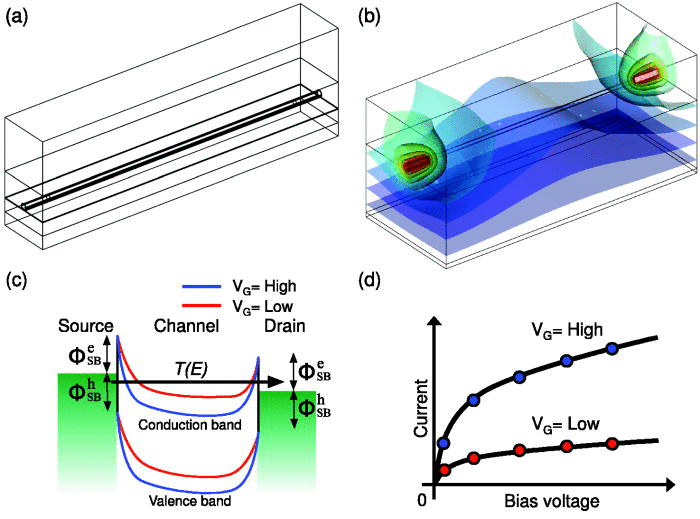One dimensional nanowire field effect transistors (NW-FETs) are a promising platform for sensor applications. The transport characteristics of NW-FETs are strongly modified in liquid environment due to the charging of surface functional groups accompanied with protonation or deprotonation. In order to investigate the influence of surface charges and ionic concentrations on the transport characteristics of Schottky-barrier NW-FETs, we have combined the modified Poisson-Boltzmann theory with the Landauer-Büttiker transport formalism. For a typical device, the model is able to capture the reduction of the sensitivity of NW-FETs in ionic solutions due to the screening from counter ions as well as a local gating from surface functional groups. Our approach allows to model, to investigate, and to optimize realistic Schottky-barrier NW-FET devices in liquid environment.

One dimensional nanowire field effect transistors (NW-FETs) are a promising platform for sensor applications. The transport characteristics of NW-FETs are strongly modified in liquid environment due to the charging of surface functional groups accompanied with protonation or deprotonation. In order to investigate the influence of surface charges and ionic concentrations on the transport characteristics of Schottky-barrier NW-FETs, we have combined the modified Poisson-Boltzmann theory with the Landauer-Büttiker transport formalism. For a typical device, the model is able to capture the reduction of the sensitivity of NW-FETs in ionic solutions due to the screening from counter ions as well as a local gating from surface functional groups. Our approach allows to model, to investigate, and to optimize realistic Schottky-barrier NW-FET devices in liquid environment.
